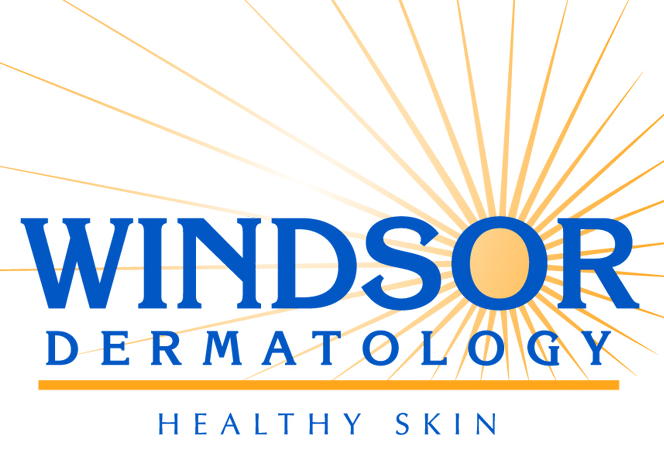Glycolic peels use alpha-hydroxy acid (AHA) to freshen and rejuvenate your skin by removing
dead and damaged skin cells from the top layer. They are especially
effective for skin that is showing visible signs of aging and sun damage, and
for those who want to liven up their appearance with skin renewal and healthy
glow.
At Windsor Dermatology, patients experience minimal
discomfort and downtime associated with this procedure and quick results are
clearly visible after only one treatment. They report smoother, healthier
looking skin, with a more even skin tone and a reduction in fine lines and
discolorations.
How Does a Glycolic
(AHA) Peel Work?
The aging process and years of sun exposure slow the rate of
cell replacement – leaving old, dead or damaged cells on the top layer of skin.
These dead cells bond together and inhibit the generation of new healthy cells
to replace them. This makes your skin look dull, uneven and older than it
should.
Our aesthetician applies a 30-70% glycolic acid solution
that loosens the bond that holds these dead skin cells together, revealing a
new layer of skin that is fresher, smother and more youthful in appearance.
Glycolic acid also helps to stimulate your body’s production of collagen and
elastin – these also help to reduce the appearance of fine lines and wrinkles.
How Often Do I
Need a Glycolic (AHA) Peel?
Patients generally report seeing a noticeable improvement
after only one peel; however, because glycolic peels are milder than other
types of treatments, you may need several treatments to achieve the maximum
desired results. Our aesthetician will be able to advise you on the number of
recommended treatments for your condition, following an initial evaluation and
treatment.
From past experience, we have found that three to six
sessions are initially required to achieve ideal results, as skin texture
continues to improve over several months. These will be scheduled at regular
intervals until the desired outcome is achieved. Many patients choose to maintain their results with additional treatments,
based upon the aesthetician’s guidance and recommendations.
What Can I
Expect After Each Treatment?
A glycolic peel is the ideal minimal to no downtime solution
for many common skin problems. In fact, many patients schedule the procedure
during their lunch breaks and return to work or other daily activities
immediately following the procedure. You may experience some redness
immediately following the procedure and some light flaking for up to a week.
What Are the
Overall Benefits of a Glycolic (AHA) Peel?
After your glycolic peel, you will notice improved skin
texture, and your face will be softer and smoother, both to the touch and in
appearance. You may notice a reduction in fine lines and wrinkles. Your skin
tone will appear more even and your complexion may be brighter, with less
blotchiness and discoloration. Best of all, you may hear from others how
wonderful you look…because you do!
Why Windsor
Dermatology?
We understand patients
may be overwhelmed with the myriad
skincare alternatives available today. Windsor Dermatology’s licensed and
accredited aesthetician is trained to recommend a personal skincare treatment
plan, based on a thorough analysis and assessment of your individual needs. Our aesthetician can also suggest a home-based
regimen that will complement and maintain your treatment-based, in-office procedures.
Reverse the
Aging Process with Glycolic (AHA) Peels
Discover how Windsor Dermatology can help you turn back time
and improve your appearance with glycolic (AHA) peels, performed by our staff
aesthetician. Glycolic peels are a non-invasive alternative to traditional
surgical methods, and they have been shown to be effective in
treating/eliminating the following skin conditions:
- ·
Fine lines and wrinkles
- ·
Tired or old-looking skin
- ·
Dull skin that has lost its luster
Our patients are always assured of receiving the most
advanced treatments and personalized care from our highly skilled medical
aesthetician. If you are experiencing a skincare-related issue, we invite you
to contact our office to schedule a consultation - (609) 443-4500.








